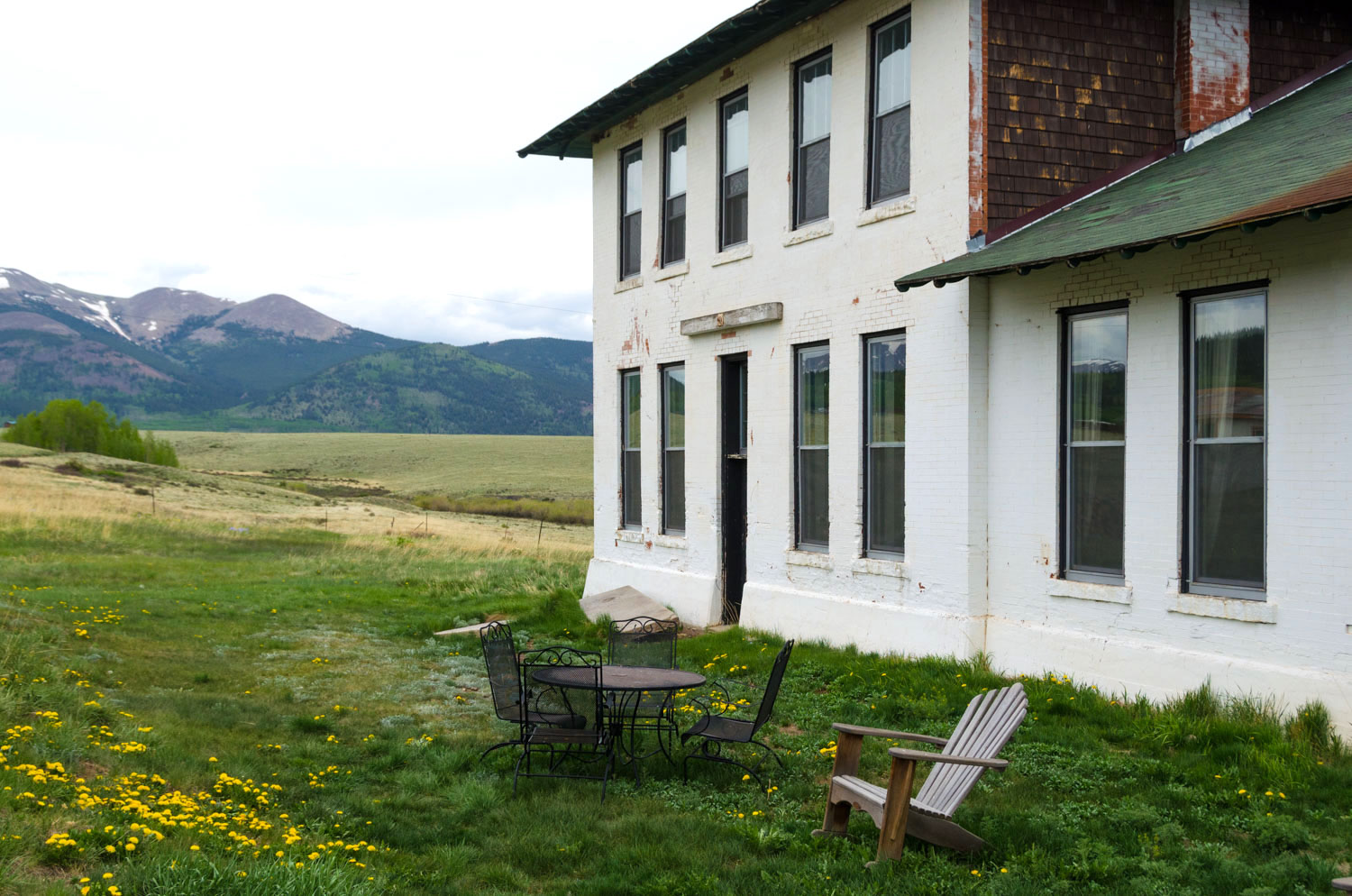Colorado is riddled with we call “ghost towns.” Abandoned after the mining boom became a bust, people vanished from these once-thriving communities and left a bit of the past behind, of which we can still see today. While some have remained quiet, others have managed to thrive in the modern world, and even some seeking to reclaim their past, like Como, Colorado – a ghost town that still has a lot of life still left in it.
Hidden along Highway 285, just 10 miles north of Fairplay, the quiet town of Como offers a bit of a ghostly feel where remnants of the past linger. But a future still exists, as there are still businesses and a few residents remaining.
Named after Lake Como in Italy, because of the many Italian miners that called this part of Colorado home, Como was established with mining prospectors seeking to claim gold during the 1859 Gold Rush. By 1881, the booming town had 500 residents as it grew to be the center of the Denver, South Park, and Pacific Railroad that linked passengers from Denver to Como. At its height, the railroad had 335 miles of narrow-gauge line, making it the largest narrow-gauge railroad in the state.
As most of Colorado’s mining towns quickly saw their rise, they also rapidly saw their demise. As mining came to a stop, so did the need for the railroad. So, by 1937, as the last few trains left, the town has sat quietly ever since. Today, Como is slowly coming back to life, and yet still retains its historic charm and character. Discover how you can uncover the past and still live in the present with a visit to Como, Colorado.
Things to Do
As the south entrance to Boreas Pass, Como makes a great starting point or endpoint for exploring the pass. As part of the original Denver, South Park, and Pacific Railroad, Boreas Pass is a 22-mile road located on the Continental Divide that reaches 11,481 feet in elevation, guiding visitors from Como to Breckenridge. Along the drive, there are several opportunities for hiking and biking in the summer and cross-country skiing in the winter. Beyond recreational activity, there are historical highlights along the way including the old Section House, the original boxcars used at the train station, and “Ken’s cabin,” one of the oldest buildings in Summit County. It is best used in the summer and makes for a beautiful drive in the fall with the changing aspens.
To better understand Como’s history, unlock the past with their historic walking tour. Much of Como’s history is tied to the railroad and mines, so much of its preservation is supported by the Denver, South Park, and Pacific Historical Society. The walking tour’s main attractions are the town’s three establishments listed on the National Register of Historic Places – the Como Roundhouse, Depot, and the Como Eating House & Hotel. Venture a bit further into town and discover other historic structures that add to Como’s distinctive character including IOOF Hall, Como Catholic Church (now a private residence) and the Como High School. A copy of the historic walking tour guide is available at the Mountain Man Gallery at 6th Street and Broadway or at almost Park County visitor centers.
As you make your way to the end of the tour, be sure to drive to the top of town, towards the entrance to Boreas Pass to visit the historic cemetery. Bathed in a massive grove of aspen trees, the graveyard is most beautiful in the fall.
The Como Project – South Park Rail Society

Determined to preserve a piece of its history, The Como Project, funded by the South Park Rail Society, is a group of volunteers who are dedicated to restoring Como to its glory days by returning an operational steam locomotive to town and rebuilding the tracks that were once the heartbeat of this town.
One of the best ways to better understand Como’s history is at the Annual Boreas Pass Railway Day event in August. In 2017, the historical society revealed the restored and operating Klondike Kate, an old steam engine, that made it down the restored tracks for the first time in 80 years. The event is the best time to view Como’s relics of the past with guided tours of the painted houses, the Train Depot, Roundhouse, plus a few of the historic buildings and schools are open for viewing.
Where to stay

With only one option for lodging, the historic Como Hotel (known to the locals as the Como Eating House) is an easy choice for those wishing to stay a night or two. Placed on the National Register of Historic Places, the hotel was built for the railroad as a place to eat and sleep for those passing through town. The hotel keeps its historic nature with modern updates. While this used to be a place for dining, it no longer serves food to the public.
The next time you find yourself along the 285 corridor, be sure to make a stop in Como, one of Colorado’s ghost towns that still has life left in it.
All photography by Jessica Hughes, unless noted otherwise





